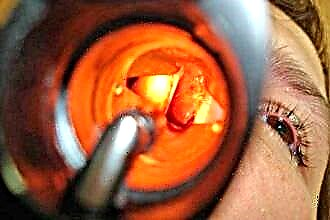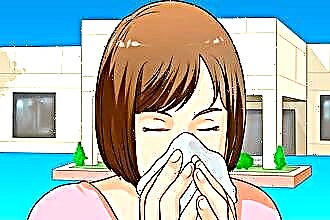Each of us knows at least in general terms how to treat a cold. However, not many people think about the correctness of the treatment. When mucous discharge and nasal congestion appear, it is enough to drip vasoconstrictor drops into the nose, after which, in most cases, nasal breathing is restored. In this way, far from all types of rhinitis can be cured, and, we note, there are more than a dozen of them. For example, cold coryza can be treated with warming treatments and vasoconstrictive nasal drops. At the same time, with the atrophic form of the disease, such manipulations are prohibited.
The types of rhinitis differ in origin, mechanism of development and clinical signs. With this in mind, therapeutic directions can also differ, and radically.

In the etiology of the common cold, the leading role is played by:
- infectious agents (viruses, bacteria). This can be a primary infection against the background of a decrease in local immunity or the activation of a chronic infection of bacterial origin. Influenza infection is characterized by hemorrhagic rhinitis. Separately, we highlight fungal rhinitis, when a conditionally pathogenic fungus is activated and begins to multiply intensively. Often this occurs against the background of prolonged use of antibacterial nasal drops, when the normal composition of the microflora of the nasopharynx is disrupted;
- allergic factor;
- hypothermia;
- curvature of the septum, trauma, anomalies in the development of this zone, surgical interventions;
- industrial hazards when the air is contaminated with dust, chemicals;
- chronic diseases of infectious, hormonal origin, diseases of the nervous system, vascular pathology.
Types of rhinitis
Rhinorrhea can accompany many diseases, which is why there are dozens of types of rhinitis. Depending on the causative factor and the duration of the disease, acute and chronic forms of rhinitis are distinguished. Types of rhinitis:
- chronic (catarrhal, hypertrophic, atrophic);
- acute infectious;
- allergic;
- vasomotor;
- idiopathic rhinitis, when the cause of the nasal congestion is unclear.
Another type of rhinitis is a specific form. Depending on the etiological factor, a diphtheria, gonorrheal form is distinguished, as well as a runny nose with scarlet fever or measles.
Chronic rhinitis
During the year, rhinorrhea may appear repeatedly. It may be due to the occurrence of a primary inflammatory process in the nasopharyngeal mucosa or as a result of an exacerbation of a chronic infection in the nasal cavities. Chronization of inflammation occurs in the case of improper treatment of the acute phase of a cold or constant exposure to a provoking factor (cold rhinitis is typical for people working in cold rooms or outdoors).
Year-round rhinitis develops when:
- the presence of congenital anomalies in the structure of the nasopharynx, a deformed septum, or after a traumatic change in the structure of this area of the face. All this disrupts the airway function of the nasal passages, makes it difficult to ventilate the paranasal sinuses, which predisposes the persistence of bacterial infection;
- intranasal polyps, which close the lumen of the nasal passages and increase the risk of developing congestion. As a result, polyposis rhinitis is observed;
- adenoids and frequent adenoiditis. With the proliferation of the lymphoid tissue of the amygdala, the risk of its infection and the formation of a chronic focus of infection increases;
- prolonged use of nasal drops with a vasoconstrictor effect, which leads to atrophy and dryness of the nasal mucosa;
- the presence of harmful working conditions, when for several years a person has been breathing dry, polluted air or strong odors of chemicals.
The classification of chronic rhinitis depends on the mechanism of development and the characteristics of the course of the disease.
There are three forms of pathology, which determines the treatment of the disease.
- catarrhal look - characterized by the presence of an inflammatory process in the nasopharynx, which is manifested by mucosal hyperemia. Discharge from the nose has a viscous consistency and mucopurulent character. Nasal congestion is worse in cold weather or changes in body position. Lying on its side, congestion is observed in the underlying nasal passage. Rhinoscopy reveals stagnant, sometimes with a bluish tinge, hyperemia and swelling of the mucous membrane. The hemorrhagic component of inflammation is absent. The general condition of a person, as a rule, does not worsen, only local symptoms of rhinitis, aggravated in the supine position, are of concern. If treatment is not carried out, the risk of a disorder of smell, the development of chronic otitis media and hearing loss increases;
- hypertrophic form - differs in the proliferation of the mucous membrane, cartilage and bone structures in the nose. The hyperplastic process proceeds slowly, but gradually progresses. With an increase in the size of the internal nasal structures, the respiratory lumen closes, which is clinically manifested by the nasal voice.
 With hypertrophy, small depressions appear in the tissues, in which pathogenic microbes and purulent masses accumulate. Endoscopic examination visualizes hypertrophic areas of gray-red, burgundy or bluish color. It depends on the blood supply to the tissues. The hemorrhagic component of inflammation is not observed. If not treated, sinusitis (sinusitis, frontal sinusitis), otitis media, as well as conjunctivitis due to damage to the lacrimal apparatus develop. Often, lingering rhinitis leads to headaches, coughing fits and insomnia;
With hypertrophy, small depressions appear in the tissues, in which pathogenic microbes and purulent masses accumulate. Endoscopic examination visualizes hypertrophic areas of gray-red, burgundy or bluish color. It depends on the blood supply to the tissues. The hemorrhagic component of inflammation is not observed. If not treated, sinusitis (sinusitis, frontal sinusitis), otitis media, as well as conjunctivitis due to damage to the lacrimal apparatus develop. Often, lingering rhinitis leads to headaches, coughing fits and insomnia; - atrophic appearance - characterized by thinning of the mucous membrane, dying off of the villi of the epithelium and the disorder of physiological functions. Atrophic processes can be the result of frequent inflammation of the nasopharyngeal mucosa, severe diseases of internal organs, prolonged exposure to unfavorable environmental factors, including of a professional nature. Symptomatically, the pathology is manifested by dryness in the nose, yellow-green dry crusts, in which there is a hemorrhagic character. This indicates damage to the blood vessels. When there is no treatment, atrophic processes progress and reduce the acuity of smell up to anosmia. On rhinoscopy, the nasal cavities appear dilated due to thinning of the mucous membrane. The nasopharynx can be visualized through the choanae. This type of rhinitis is often referred to as a dry rhinitis.
It is possible to get rid of a lingering rhinitis only after eliminating the provoking factor.
Coryza
When a runny nose appears, its types need to be differentiated to determine the correct treatment tactics. Acute rhinitis can be caused by infection or the influence of the cold factor. In addition, a runny nose can occur as an independent disease or accompany the course of another pathology (diphtheria, measles, flu).
Infectious rhinitis can develop after an initial infection of the body or as a result of the activation of an infection in the throat, for example, in chronic pharyngitis. Intensive reproduction of pathogenic microbes begins against the background of a decrease in local immune defense. After general hypothermia or inhalation of frosty air, cold rhinitis develops.
Acute coryza can also occur with inhalation of strong odors or after galvanic caustics. Clinical symptoms depend on the stage of the inflammatory process:
- at the first stage, a person is worried about dryness of the mucous membrane, itching in the nose, sneezing, tickling in the nasopharynx.With rhinoscopy, there is redness, swelling and dryness of the mucous membrane;
- the second stage is characterized by a decrease in the severity of swelling of the mucous membrane and the appearance of profuse rhinorrhea of a mucous nature, which complicates nasal breathing;
- the third stage is symptomatically manifested by mucopurulent nasal discharge of a viscous consistency, the volume of which gradually decreases. Complete recovery usually occurs within 7-8 days.
Infectious rhinitis can occur with hyperthermia of varying severity. Its level depends on the aggressiveness of the provoking factor (type of infection), as well as the resistance of the person's immune defense.
A distinctive feature of rhinitis with influenza is the hemorrhagic nature of rashes on the nasopharyngeal mucosa, which are visualized during rhinoscopy and pharyngoscopy.
Allergic rhinitis
If the runny nose lasts for a month or more, it is worth looking for allergens. An allergist consultation is prescribed if the results of the examination of the ENT doctor have excluded the presence of infection in the nasopharynx, as well as the influence of negative environmental factors.
Seasonal rhinitis is characterized by a specific course of the disease, because its symptoms are observed only during a certain period of the year. Usually, these types of rhinitis are observed in people with an increased predisposition to allergies.
Clinical signs of the disease are observed during the flowering season of plants, which is caused by the spread of pollen with a stream of wind and its settling on the nasal mucosa. Possessing allergenic properties, pollen after contact with the conjunctiva or mucous membrane of the nasal passages causes an attack of sneezing, rhinorrhea and severe itching. In severe allergies, an asthmatic attack may develop.
 Treatment of allergic rhinorrhea is carried out with antihistamines of local and systemic action. If necessary, the doctor may prescribe nasal drops with a hormonal component, for example, Nasonex.
Treatment of allergic rhinorrhea is carried out with antihistamines of local and systemic action. If necessary, the doctor may prescribe nasal drops with a hormonal component, for example, Nasonex.
In severe rhinitis, hyposensitizing therapy is performed. It involves the subcutaneous administration of an allergen in minimal doses that cannot cause an allergic reaction. Gradually, the dose of injections is increased, increasing the threshold of sensitivity of the immune system to the allergen. The task of therapy is to stimulate the production of specific antibodies that can block the development of an allergic reaction after contact with a provoking factor.
If a person suffers from a seasonal rhinitis, it is recommended to him to carry out a course of hyposensitization 6-8 weeks before the beginning of the flowering period of the plant. If there is no effect, a change of residence may be required.
Vasomotor rhinitis
The onset of vasomotor rhinitis can be preceded by many factors:
- viral infection of the body;
- poor air quality. Rhinorrhea can be provoked by dry, hot, cold, humid air, a sharp change in weather conditions, smoking, harsh odors, increased dustiness, as well as a high concentration of chemicals in the air;
- changes in the nervous system and hormonal state under the influence of a stress factor. This group includes hormonal rhinitis;
- long-term use of vasoconstrictor nasal drops. According to the instructions, the duration of the therapeutic course is no more than 5 days. If the recommended terms are not observed, vasomotor rhinitis develops with a predominance of atrophic processes in the nasopharyngeal mucosa;
- long-term use of certain medications (NSAIDs, beta-blockers);
- hormonal fluctuations (pregnancy, adolescence), which provokes hormonal rhinitis;
- vascular diseases.
Each form of the common cold requires an individual approach to treatment. Only in this way can you completely get rid of the unpleasant manifestations of rhinitis and avoid the development of complications.

 With hypertrophy, small depressions appear in the tissues, in which pathogenic microbes and purulent masses accumulate. Endoscopic examination visualizes hypertrophic areas of gray-red, burgundy or bluish color. It depends on the blood supply to the tissues. The hemorrhagic component of inflammation is not observed. If not treated, sinusitis (sinusitis, frontal sinusitis), otitis media, as well as conjunctivitis due to damage to the lacrimal apparatus develop. Often, lingering rhinitis leads to headaches, coughing fits and insomnia;
With hypertrophy, small depressions appear in the tissues, in which pathogenic microbes and purulent masses accumulate. Endoscopic examination visualizes hypertrophic areas of gray-red, burgundy or bluish color. It depends on the blood supply to the tissues. The hemorrhagic component of inflammation is not observed. If not treated, sinusitis (sinusitis, frontal sinusitis), otitis media, as well as conjunctivitis due to damage to the lacrimal apparatus develop. Often, lingering rhinitis leads to headaches, coughing fits and insomnia;

